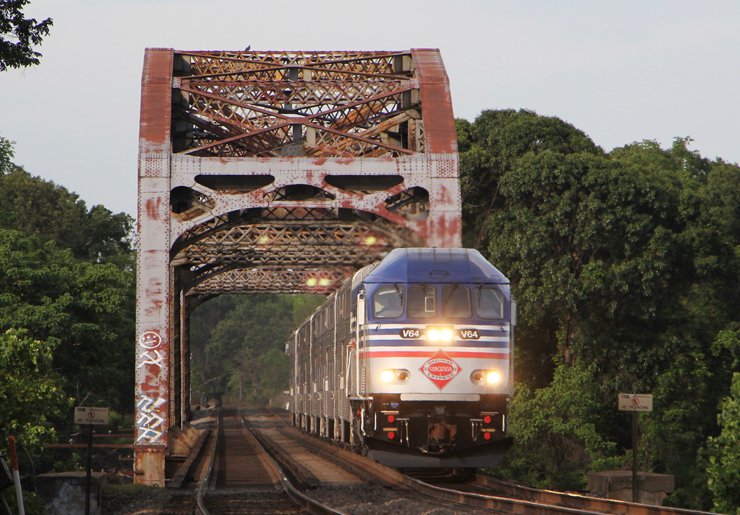
ARLINGTON, Va. — The Commonwealth of Virginia and CSX Transportation have reached a deal on a $3.7-billion plan that will address rail congestion south of Washington D.C. by separating passenger and freight operations, allowing for a significant expansion of passenger and commuter rail services.
The agreement announced Thursday will create a new, state-owned Long Bridge over the Potomac River, for exclusive use by passenger and commuter rail; lead to state acquisition of more than 225 miles of track and 350 miles of rail right-of-way; and include 37 miles of track improvements, including a passenger-train flyover between Franconia and Springfield, Va.
Virginia Gov. Ralph Northam called the agreement “a once-in-a-generation opportunity to make our rail system work better for everyone, both in Virginia and on the entire East Coast.” Katie Crisol, chair of the operations board for commuter service Virginia Railway Express, said the deal “will enable us to grow VRE to include new riders, new hours, and weekend service, thereby improving the quality of life and increasing economic opportunities for tens of thousands more Virginians.”
Other aspects of the agreement, to be phased in over a 10-year period, include:
— Doubling the number of Amtrak trains in Virginia, and provindg nearly hourly service between Richmond and Washington;
— Increasing VRE service by 75 percent along the Interstate 95 corridor, with trains operating on 15-minute intervals during peak periods;
— Increased Amtrak service to Newport News, Va., and an improved schedule for the third Amtrak train to Norfolk;
— Acquisition of the abandoned S-Line, from Petersburg, Va., into North Carolina, for future high speed rail service;
— Preserving an existing freight corridor between Doswell, Va., and Clifton Forge for future east-west passenger service.
The existing two-track Long Bridge over the Potomac handles 34 VRE trains, 24 Amtrak trains, and 18 CSX freight trains daily, and has long been a bottleneck for rail traffic out of Washington. [See “Highway tolls could help fund VRE, DC Metro projects,” Trains News Wire, Dec. 18, 2019.] The new bridge will ease that problem, and is part of a package of infrastructure improvements that will also include a fourth track between Crystal City and Alexandria, Va.; a third track between Franconia and Lorton, and the Franconia-Springfield flyover.
Amtrak has approved a memorandum of understanding with Virginia supporting its role in the project. “Amtrak is thrilled to be supporting this game-changing rail investment program as an investor and partner,” Stephen Gardner, Amtrak senior executive vice president and chief operating and commercial officer, said in the state’s press release. “This program is a model for the nation of how to grow passenger and freight service together in order to relieve congestion, protect our environment, and enhance mobility.”






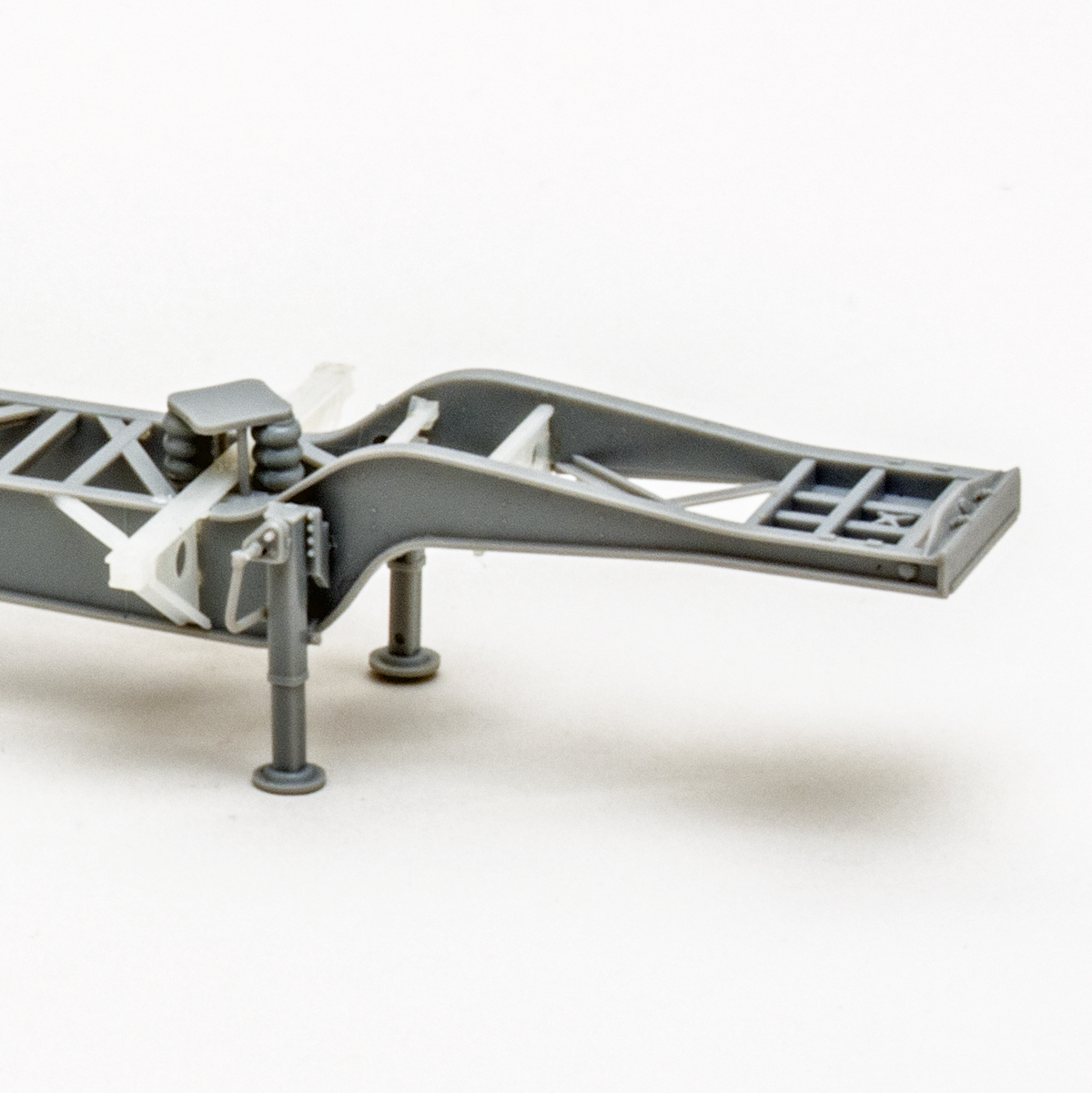
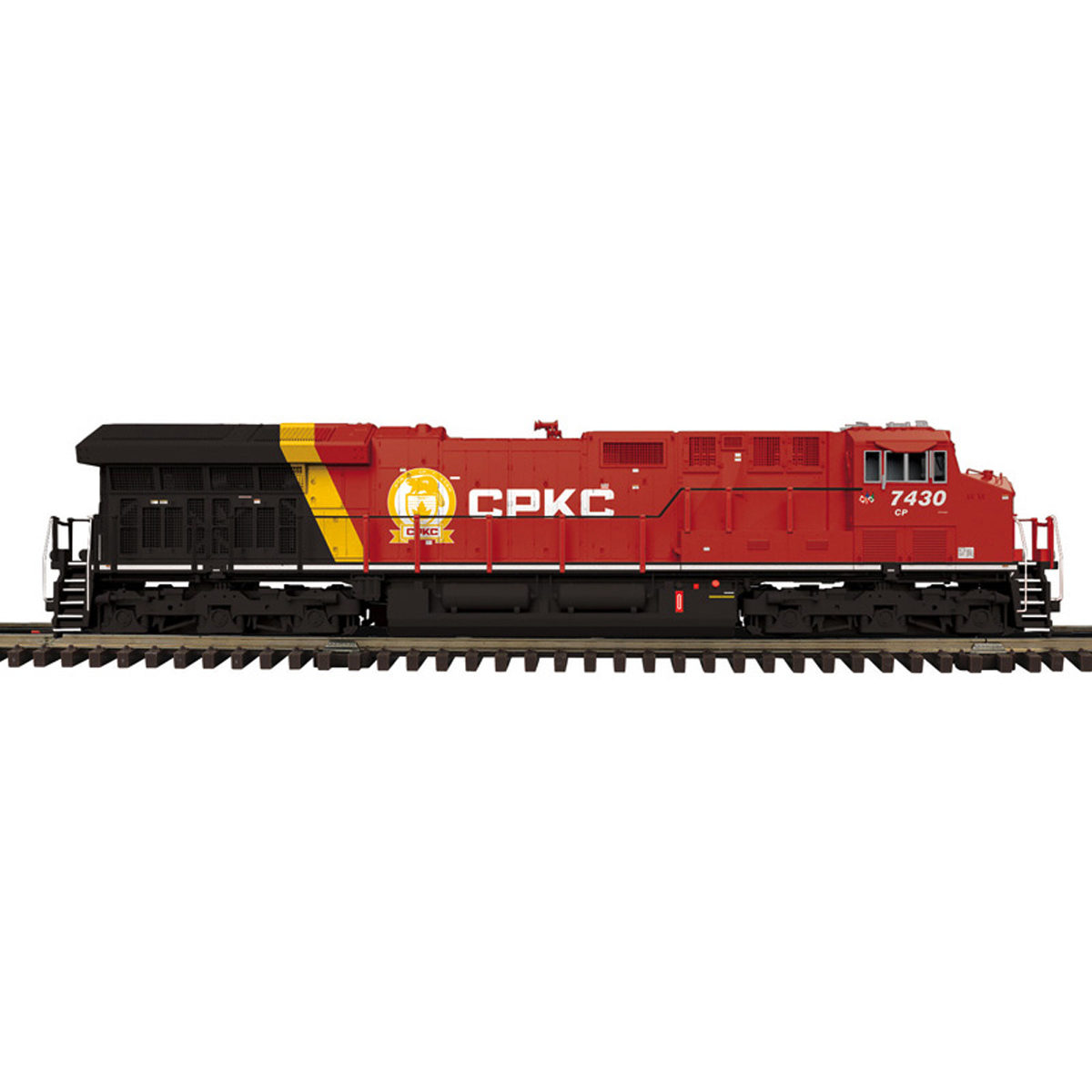
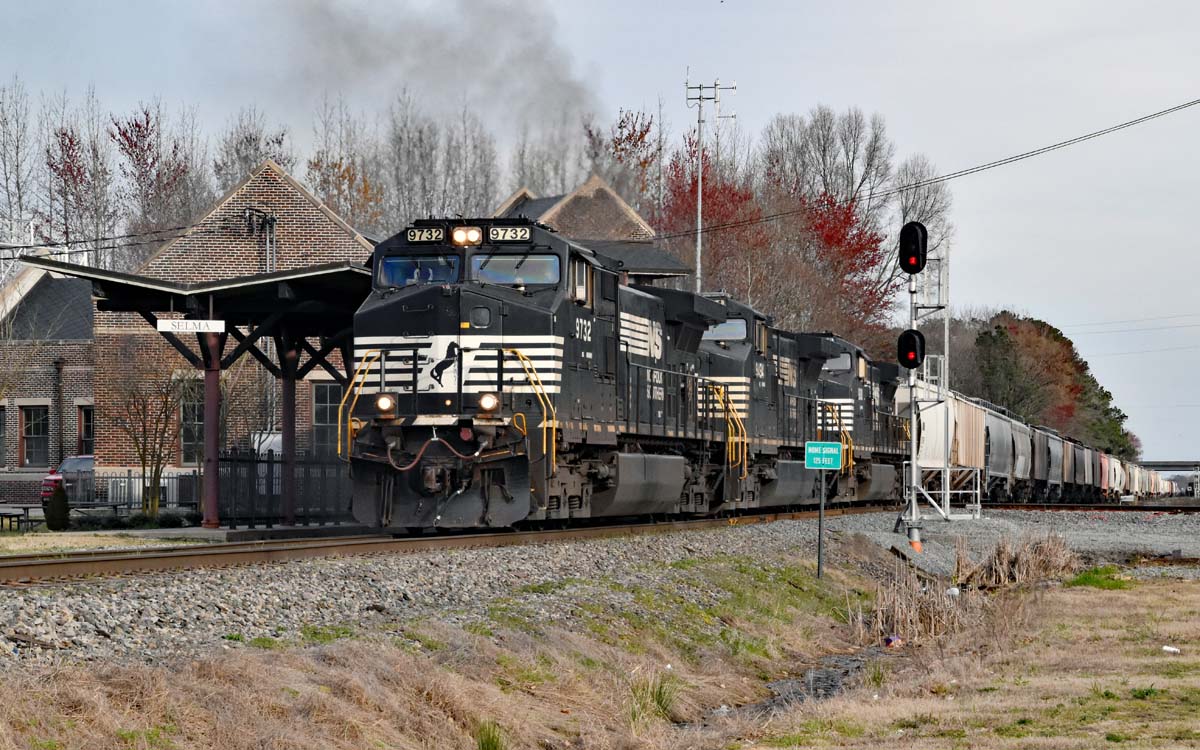
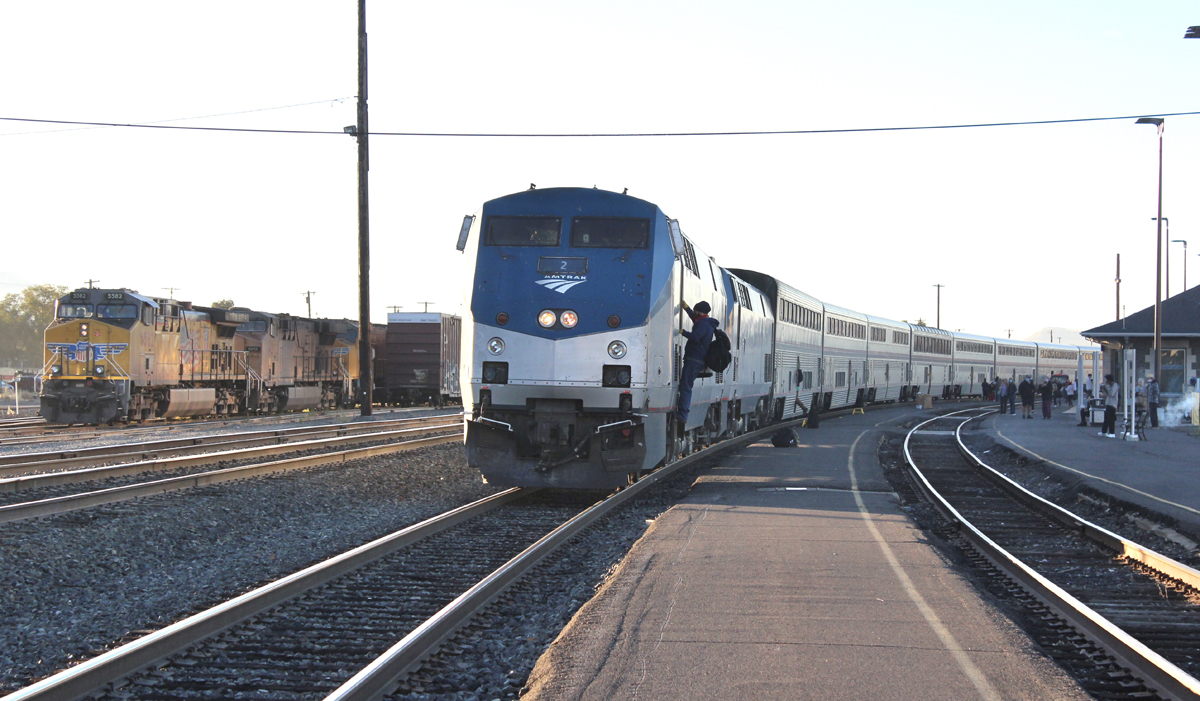




Actually , diverting a small number of cars , (or conversely adding a few more), can have a huge impact on a near capacity road. The difference between moving and gridlock can be 5 or 10 % of capacity .
then of course there is providing transport for those that cannot or do not want to drive a car.
PAUL – Once again thanks for your thoughtful comments.
Here’s the thing about rail or transit diversion from highways, in new, untraditional markets. The diversion is too small to make an impact on traffic. The diversion might be wonderful for the commuter on the train, but the 99% of commuters on the Interstate Highway won’t notice the difference.
That is, if there’s a train. Sorry, there isn’t a train.
The only solution to traffic in suburban Nashville is not to have suburban Nashville. The area can’t support that number of people each of whom feel entitled to have a job wherever they want, often many miles from home at the other end of a 90-minute traffic jam. Then expect either TennDOT highways (a freeway sixteen lanes wide) or some transit agency (a train) to get them there. In other words, I can live in Murfreesboro, work at Vanderbilt Medical Center. The State of Tennessee will conjure up a train to get me there, merrily flying by the parking lots of I-24 and I-440 and South 21st Street in Nashville. Sorry, there’s no Santa.
Here I could draw a parallel to the emerging failure of recycling. There simply isn’t a market for many of the commodities we sort. In this culture, in this economy, we expect we can buy, buy, buy, consume, consume, consume, discard discard, discard. We sort the garbage and feel entitled that some mythical manufacturer in China or Ghana will turn our garbage into a usable product. That way we don’t have to feel guilty about the piles of stuff stuff stuff stuff we buy but don’t need. Sorry doesn’t work that way. No matter how wonderful a person I am, China can’t turn my garbage into gold, and TennDOT can’t get me forty-five miles to work in twenty minutes.
Christophe Parker, most of your questions are answered in the story from WTOP. Micheal Maitland posted the link below.
Hi CHARLES.
I didn’t call anyone backwards. Saying a particular set of state and local governments and voters aren’t future oriented isn’t exactly the same thing as saying they’re backwards. In fact with the “more of the same” roads only transportation policy that fails to keep up with growth anywhere growth happens Tennessee is quite living in the *present*. A policy that I and many others don’t think is particularly sustainable. Specifically a policy that increasingly can’t deliver mobility at a reasonable cost (witness Nashville traffic).
Maybe you failed to notice that I reserved most of my name calling vitriol for my most recent (three years) home state of California, where despite a perhaps better appreciation that the status quo isn’t working, the words “incompetent” (and quite likely “corrupt”) aren’t too strong. But perhaps we can agree that increasing levels of corruption own no particular side of the aisle. And btw I’m pretty sure I can go back into the NewsWire comments and find much worse name calling w.r.t. California government (and California citizens!) from your pen.
But let’s talk rail passenger service instead. Something the Fred Frailey said years ago about “building a passenger rail culture” being a precondition to having a truly effective rail mode – and politically accepted funding structures – rings true here. I think the context IIRC was about Obama administration stimulus spending for rail rejected by Ohio and my birth state of Wisconsin. But the PNW (and NC and VA!) were happy to take those funds. Because passenger rail culture. So yes building a passenger rail culture in Tennessee is difficult and would need to start from scratch. They’ve had some chances before Nashville hit the knee of the growth curve that local and state government were assuredly pursuing. Yet it happened in North Carolina, before which the sharpie exercise you propose would have been equally as challenging.
Ultimately the pain of hour long one way work commutes and futile weekend escapes from places like Nashville need to hit home and a pilot project that practically relieves it for a small fraction but demonstrates the potential for their neighbors is what can tip the balance. Eventually a vision that includes Atlanta as a corridor rail hub could and should certainly extend to Nashville (and would add Chattanooga as a more interesting and mobility-viable place for people – and business – to settle.
Knoxville and Asheville are great towns also. But not as easy to knit them into Nashville or Atlanta by rail admittedly unless you make Chattanooga a hub, which isn’t preposterous. But that extra lane for more traffic on I-40 (and truck freight as long as the NS Crescent Corridor can’t compete with I-81/I-40) ain’t cheap either.
I’d like to read more reporting on this very significant deal There is a lot I don’t understand from press reports:
How does Amtrak’s role in this deal work: Where is Amtrak getting the money? Will Amtrak be a co-owner? Does this bind the state to Amtrak as an operator in the future?
Press reports said no new financial resources are needed for this deal. What exactly does that mean? What financial resources are being used and what is their source?
What is CSX getting? (One person told me they get free trackage rights. Is that so?) How does CSX protect the ability to run freight trains without just waiting until night when passenger trains aren’t run first.
Who does dispatching? Maintenance?
How much “aspiration” is in this deal, waiting for presumed funding?
NC and VA are making huge future strides in providing service to their citizens, PA should be modelling their DOT with what is working in other in states…. http://www.drpt.virginia.gov/
Michael Moss… I appreciate your comment! The difference between PA and VA, is that PA historically has a State Legislature and a DOT that would rather someone else manage the “half baked” services we have. There is no vision or direction on the State level for future expansion, service improvements, funding or desire to obtain RoW or equipment.
Found a map and article that shows the details. Hope they can move past the NIMBYs, countless lawsuits and mating bats and salamanders. https://wtop.com/dc-transit/2019/12/major-amtrak-vre-expansion-set-under-3-7-billion-virginia-csx-deal/
How many Railroad Retirement jobs will be created?
Penelope – I read your post, I respect it, and I see your point entirely. There are counter-arguments which you also might consider to balance out your own perspective.
(1) At what point do we stop subsiding passenger rail with state, local and federal tax money, which is becoming more and more expensive.
(2) “Neighbouring” Tennessee may be, to use your term, a “pool of stagnant water gilled with algae when it comes to passenger rail revitalization”. (Good thing I can read English English. Neighbouring? Revitalisation?) That’s all true, when it comes to passenger rail. In no other context is Tennessee a stagnant pool. The Volunteer State is booming. Tennessee is one of the economic successes of the entire world. Since the last passenger train to Nashville (a pathetic nothing of a passenger train) stopped running, Nashville has boomed like nowhere else.
FWIW Tennessee and Kentucky aren’t Virginia. Kentucky and Tennessee don’t have the rail infrastructure needed for fast, frequent passenger trains. Dropping a few billion dollars wont be enough to make a difference.
Penelope, here’s my challenge to you and to all other passenger advocates on this forum or anywhere else. If you want more passenger trains (trolleys, subways, etc.) in Kentucky, Tennessee (or wherever) print out a map, pick up a sharpie, and sketch out what you have in mind. You want more passenger trains in Kentucky and Tennessee, explain what routes and all the other details you advocate. Then we can talk. Simply saying “more trains” is an ethic to begin the discussion but it fails at continuing the discussion.
Best holiday wishes to Penelope and to all,
C. N. Landey
Brookfield Township, Wisconsin
By contrast, the neighbouring states of Kentucky and Tennessee to the west are pools of stagnant water filled with algae when it comes passenger rail revitalisation.
If VA can work with Amtrak, what is PA’s problem?
Bert Zajac: There is a lot more to this story than what is in this Newswire article. I suggest you read the Richmond newspaper. There are plans to initiate east – west service from Richmond
as well, in conjuction with the Buckingham Branch outfit.
Progressive thinking, as building more highway capacity becomes politically difficult and financially ruinous. This proposal places trains where sorely needed. It will help Virginia continue its forward progress and quality of life.
PAUL You may some good arguments, some excellent points I commend you for your second paragraph. However you went downslope in you last paragraph. With your political comment I think you made my point in my first post, which is that having an opinion for more trains isn’t the same thing as having a proposal.
Take a map of Tennessee, grab a sharpie, and start sketching what railpax routes you think Tennessee should be subsidizing. Instead of calling Tennessee residents bad names, help them out with a railpax proposal.
Maps and sharpies don’t work too well in this comment page, so we might try text. Tennessee I-24 from Nashville to Smyrna is overloaded. The parallel Murfreesboro Road US 41-70S from Nashville to Smyrna is the worst-designed road I’ve ever seen – just thinking of driving this monstrosity scares me to death .Parallel to each is CSX’s Chattanooga – Atlanta line. What exactly do you propose that would divert significant traffic from the Interstate and from Murfreesboro Road onto CSX.
Call the corridor between the two highways, I don’t know the number, call it 150k vehicles per day for lack of better. Now, PAUL, what do you consider a significant diversion. Five percent? That would be 7,500. (Tennessee should tie its state budget in knots for a five percent diversion on one corridor to one suburb?) Tell me what it would take – track improvements, stations, park-rides, access roads to park-rides, coach yard and locomotive shop, to get 7,500 people onto CSX. You’re the one who called Tennessee backwards, so start working! Good luck.
Then when you’re up and running make a proposal for a real, a noticeable, an actually helpful diversion like fifteen percent.
As somebody who lives in VA outside of the NOVA-Richmond-Beach corridor…this does NOTHING for us. No mention of an afternoon Lynchburg-Roanoke train.
But we get to help pay for this..,
Counter point: At what point do we stop subsidizing highway and airline use with state, local and federal tax money, which is becoming more and more expensive.
The idea that only passenger rail should operate sans subsidy inevitably leads to inadequate rail passenger service and over use of highway and airline service which becomes more congested over time. Leading to more construction, and the cycle continues. Which is where we are today. Take into account that this construction is based on need, not return on investment. This didn’t happen overnight. It’s the result of decades of transportation policy to promote highway and airport construction with tax dollars.
This policy has also resulted in freight diversion from rails to highways, despite rail’s inherent superiority of effiency.
I think this plan is forward looking, and builds on and integrates with North Carolina’s success with corridor passenger rail.
We should also not discount the potential positive impact on freight rail should they and their Wall Street sources of capital lifeblood ever decide to begin truly competing with trucks for freight transport market share. In Chicago much of the public-private CREATE spending also serves to separate freight from commuter and corridor passenger service, and allows more freight traffic – particularly schedule sensitive intermodal – to avoid “being stabbed by the dinky rush”.
To answer Charles Landey, this subsidy should stop only when we stop subsidizing personal auto transport and freight trucking, whose users fees do not come close to maintaining road infrastructure in a state of good repair, let alone expanding capacity in major metros where the “return on investment” on trip time reduction at peak periods is typically illusory at best.
Penelope Vinson’s point as I take it is this kind of future-oriented thinking about mobility challenges only seems to be effective in purple states like VA and NC, and is either rejected in deep red states in favor of roads-only roads-forever Koch Bros/ALEC orthodoxy, or incompetently managed in deep blue states like California (with the possible exception of Metrolink, Caltrain and Amtrak California, but the rest all suck, yes I mean you BART, VTA, and especially the CHSRA).